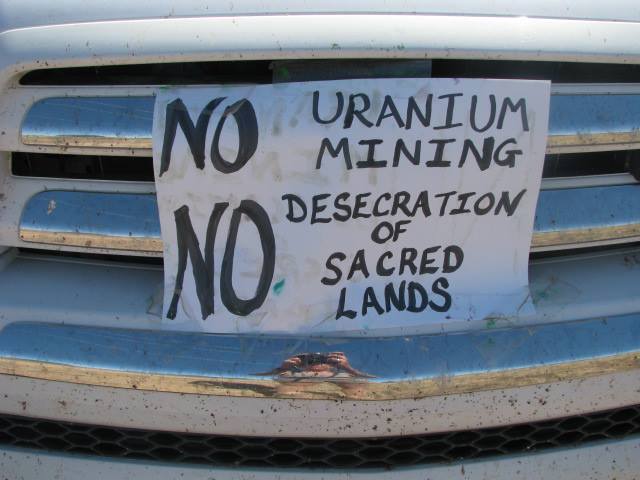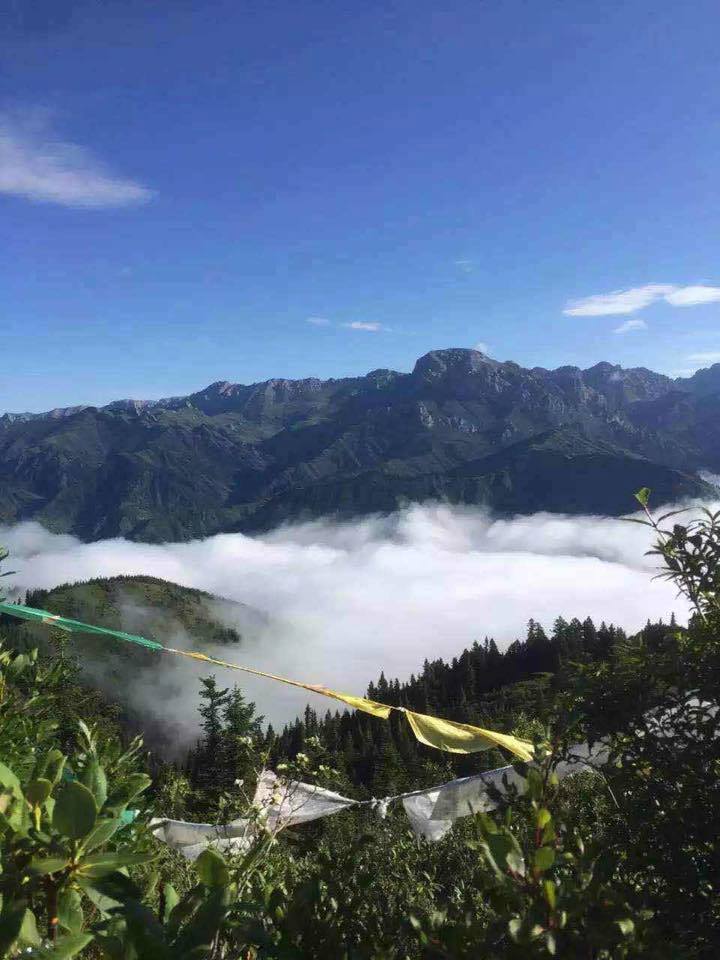
Chinese authorities have used intimidation and threats of force to block attempts by local Tibetans to save a sacred mountain from uranium mining at Dringwa (Ch: Zhanwa) Township in Dzoege (Ch: Ruo’ergai) County, Ngaba (Ch: Aba) Tibetan and Qiang Autonomous Prefecture, Sichuan Province.
According to reliable information received by TCHRD, on August 10 a mining team sent by the Chinese government proceeded to start mining at Drakzong, a sacred mountain in Dringwa. Just then a large number of Tibetans gathered at the site to stop the miners, with Tibetans explaining to the Chinese miners that it was inauspicious to mine at the sacred site and that mining would have disastrous consequences on the environmental stability of the region. In response, the miners threatened to call the police for obstructing their work. Despite protests from Tibetans, the mining team has already made preparations to start mining uranium; mining machines and equipment have been brought to the site.

Uranium was initially mined mainly for producing nuclear weapons and since the 1960s, for manufacture into nuclear reactor fuel. Being both radioactive and a toxic heavy metal, uranium mining can contaminate air, soil and water.
Drakzong is a sacred mountain considered as the dwelling place of Amnye Drakzong, the principal deity revered by local Tibetans in Dringwa. The mountain has two sacred caves that receive a continuous chain of pilgrims throughout the year. The locals believe that excavation at this site would bring catastrophes such as epidemics and droughts in the region. Owing to the local belief system, Tibetans have protected this site since time immemorial without even putting a spade on it. The plan to mine this sacred mountain has plunged local Tibetans deep into worry, fear and uncertainty.
Each and every local area in Tibet has its own sacred mountain. Tibetans believe that deities, who provide protection to the local area and people, inhabit these sacred mountains. On the top of these mountains, Tibetans perform frequent rituals meant to propitiate these sacred deities. These rituals include burning sang (junipers), throwing lungta (paper leaflets) and putting up dharchok (prayer flags). Tibetans think that acts that harm the nature such as digging sacred mountains, cutting forests, and hunting animals will bring disasters, such as epidemics, upon their livestock. Therefore, protecting these sacred mountains have become the religious custom and cultural practice of the Tibetan people for centuries, proving very effective in protecting Tibetan environment, including Tibetan flora and fauna. China’s mining of the sacred mountains, therefore, destroys not just the natural environment of Tibet, but also violates the religious belief and cultural practices of the Tibetan people.
Between 1960 and 1995, in a span of 35 years, a coalition of three mining teams bearing the pseudonyms “792”,”405″ and “407′ based in Kyangtsa (Ch: Jiangzha) and Thewo (Ch: Diebu) executed a series of mining activities at Dringwa township. Kyangtsa Township is located in Dzoege County while Thewo County is located in Kanlho (Ch: Gannan) Tibetan Autonomous Prefecture, Gansu Province. These mining activities have wrought immense harm and destruction on the local Tibetans such as deaths of a large number of livestock in this region. In Dringwa, for the past 35 years Chinese miners have mined 34 different types of metals and minerals such as gold.
The environment monitoring bureau of Sichuan Province reported on its website that in June 2014, a team of mining inspectors visited Dzoege County in connection with the mining of uranium ore in the area.
A 1992 report published by the exile Tibetan government stated that the Chinese had discovered some 200 uranium deposits by 1990 in Tibet. [1] Likewise, it was reported in early 1980s that the area around Lhasa contained arguably the world’s largest deposits of uranium. [2] However, the report published by the exile Tibetan government pointed out that the Gya Tseseda mine, located 86 kms away from Thewo town, was at the time the largest Chinese uranium mine.
Already in the early 1990s, local Tibetans in Kyangtsa had reported suffering from the harm done by uranium mining in their region. In September 1992, the now-defunct Tibet Information Network reported that the residents of Guru village in Kyangtsa Township had reported illnesses contracted since 1980. Local Tibetans recounted how the forest near the village had started to dry up and it became harder to get plants to grow. The victims died within a few hours of developing a fever, followed by a distinctive form of diarrhoea. At least 35 people out of the village population of 500 died between 1989 and 1992.
TCHRD calls on Chinese authorities to act responsibly and with restraint when dealing with peaceful Tibetan protesters, who harbor legitimate grievances against the excesses of local authorities and the miners that they support. The resistance of local Tibetans in Dringwa against mining on the sacred mountain demonstrates that neither the miners nor the local authorities have obtained free, prior and informed consent from local Tibetans who have owned and nurtured the land sustainably for thousands of years. TCHRD calls on the Chinese authorities to respect Tibetan cultural sensitivities and belief system, and refrain from implementing mining projects that could harm Tibetans and the land that they inhabit.
Endnotes:
1. Tibetan Environment and Development issues 1992, Dept. Of Information and International Relations, Central Tibetan Administration of His Holiness the XIV Dalai Lama, Dharamsala, India.)
2. Richard Pascoe, ” Uranium rich Tibet still awaits steam; ” South China Morning Post; 24 Aug. 1982 .)
